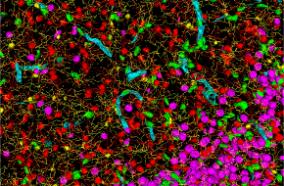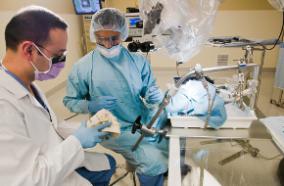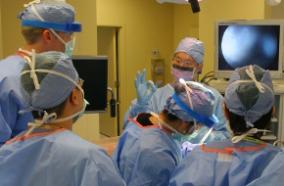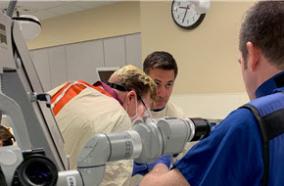A New Method for the Anterior Mitral Leaflet Segmentation in Echocardiography Videos using the Virtual M-mode Space.
A New Method for the Anterior Mitral Leaflet Segmentation in Echocardiography Videos using the Virtual M-mode Space.
Conf Proc IEEE Eng Med Biol Soc. 2018 07;2018:3120-3123
Authors: Sultanl MS, Martins N, Costa E, Veiga D, Ferreira MJ, Mattos S, Coimbra MT
Abstract
Rheumatic heart disease is responsible for the heart valve damage, caused by repeated episodes of rheumatic fever. The disease commonly inflames and scars the mitral valve of the heart, resulting in thicker, less mobile leaflets, with associated decrease in cardiac efficiency. It is important to measure and quantity the early manifestations of this disease, including variations of the thickness, shape and mobility of the leaflets. These manifestations are visible in an echocardiographic screening process. The first step towards the defined objective is to segment the anterior mitral leaflet throughout the cardiac cycle, enabling the future automatic quantification of mentioned clinical parameters. In this work, a new algorithm for the segmentation of the whole region of the anterior mitral leaflet in the virtual M-mode space is proposed. The algorithm requires a single initialization point on the posterior wall of the aorta, in the first frame of the video. A junction point is then computed, showing the location where the two leaflets connect. This junction point helps to automatically redefine the range of virtual M-mode images required to completely segment the region of the anterior mitral leaflet. The segmented anterior mitral leaflet region in the virtual M-mode space is transferred back to regular image space and its shape refined using localized active contours. Results suggest the suitability of the proposed algorithm for the segmentation of anterior mitral leaflet with a median Dice Similarity Coefficient of 0.63, and with median precision and recall of 58% and 73% respectively.
PMID: 30441055 [PubMed - indexed for MEDLINE]



















